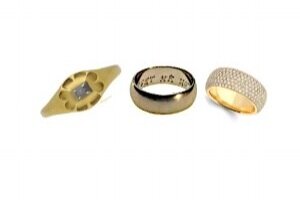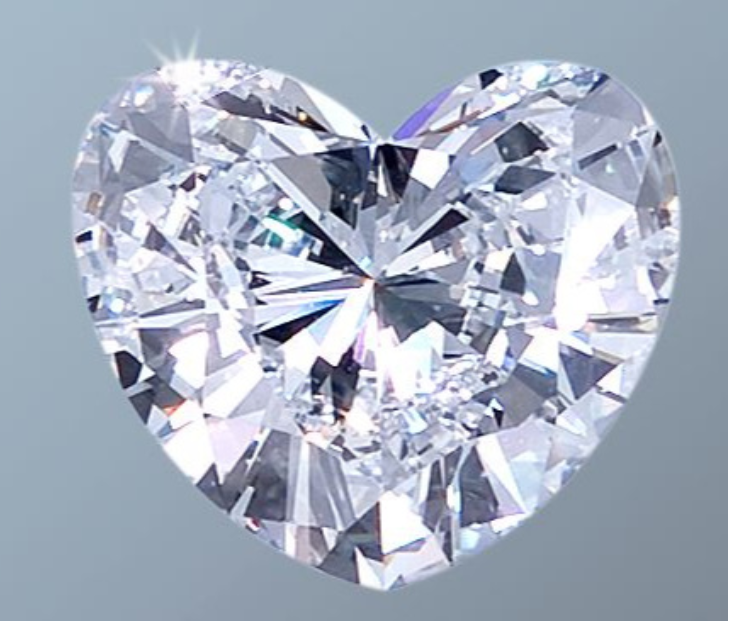History of Engagement Rings

Royal Diamonds
With any romantic story involving a handsome Prince, a beautiful actress, true love and a promise of happily-ever-after, there will be a sparkling engagement ring in there somewhere – an emblematic jewel that signifies value and significance both temporal and spiritual. The ring is an unbroken band signifying eternity, and for Royal Marriage a sacrament before God. Remember the public flashing of Prince Harry’s engagement ring for Megan? That bespoke creation reused two diamonds from his late mother Diana’s collection alongside an ethically sourced new diamond from Botswana, which has invited the scrutiny and speculation of the world’s press ever since.
The purpose of giving an engagement ring is a visible sign of a public commitment – the lady is engaged or ‘taken’ – she has promised herself to another, who literally has put his money where his mouth is. So, where did the tradition of engagement rings come from?
We can’t tell if the jewellery producing societies of prehistory and ancient history produced wedding or betrothal rings, as such, but it is well known that most societies followed a system of dowry or bride money. As with any form of ‘special money’, ie luxury items or valuable goods that are not specifically currency that can be exchanged, any form of jewellery would suffice, not just a ring. Rings have an incredibly ancient history, as does the human fascination with ornament and handcraft. If we go back over 3,000 years to Ancient Egypt, we find rings featuring snakes – a symbol of fertility – and knotted snakes in a figure 8 or a snake eating its tail to form an unbroken circle to denote eternity: the uroborus. Maybe the basis for the saying that one is ‘tying the knot’ echoes back this to very ancient concept that two are knotted together as one!
However during the Roman era, a special ring called an ‘annulus pronubus’ given by the groom to his fiancée had become part of a civil legal process, an important pledge of fidelity on both sides.
In the manner of all jewels, an engagement ring proclaims one’s taste and rank, although in the Roman and again in the early Medieval Ages sumptuary laws prohibited lower classes from ostentation above their station so we find Roman wedding rings made of iron as a result. No matter what the rank, only one ring was used for the purpose of both wedding and ring, as often happens now.
Culture and Diamonds
The only culture to revere diamonds in the past as much as we do now was the early Indians, who imbued diamonds with Hindu religious legends and kingly status in the vedas from c1500 BC but only as a talisman for men: diamonds were prohibited for women. Vajra, the sacred thunderbolt weapon of the Hindu god Indra, was the Sanskrit word meaning indestructible diamond, and still to this day a vajra symbolises spiritual resolve. The Indian kings kept the finest, largest, whitest diamonds to themselves, but gradually a hunger for such exotic finery developed in the West as international trade grew. In Europe and in China, diamonds didn’t really catch on in jewellery, other than in occasional jewelled rings found in the Roman period, and in China as useful drilling tools for jade. However, technology developed in the C15th cosmopolitan hub of Venice by diamond cutters using spinning lathes and diamond grit, began to grind rudimentary facets into their rough crystal faces to reveal their dazzling sparkle and brilliance. Diamonds can be seen in portraits of European kings, queens and elite courtiers from this time - look for mirror-black squares, rectangles and triangles in ornaments across their jewels, and hats, sleeves and so on.
Diamonds’ hardness has symbolised constancy for hundreds of years. A poet at an important courtly marriage in Italy c. 1475 wrote that “two hearts, two passions are bonded in marriage by a diamond” with an illustration showing two flaming torches of love encircled by a diamond ring. The first diamond ring in existence that we can clearly attribute to the occasion of a wedding is the one given by Maximilian I of Austria to his bride Mary of Burgundy in around 1477, a beautiful jewelled M set with diamonds now in Vienna. Thereafter, betrothal rings developed into finely crafted Medieval engagement rings set with a variety of stones, red for romance and passion, blue for love and the heavens, and gold poesy (love poetry) rings engraved with a motto.
Shown here is a very early diamond betrothal ring from the antique dealer Berganza set with a pointy, almost still rough, diamond – diamond dust impregnated cutting wheels and the modern system of cutting facets were not in existence at the time - but the adamantine strength of the diamond symbolised ‘foreverness’, carried from the ancient Greek’s observation of its physical property.
From left: C16 ring Berganza, nickel ring Emperor Puyi, Diamond pave ring VIP Vault Sale
Snakes, knots and Egyptian jewellery styles were re-popularised by the Victorians in their jewellery, and Queen Victoria wore a snake design engagement ring given by her beloved Albert, a sacred treasure and reminder of her love for him throughout her long life.
Rings as enduring tokens of love can be found glinting bright in the darkest of days - displayed in the Forbidden City Museum, Beijing, is a ring belonging to the doomed last Chinese Qing emperor, Puyi, forced to hand it over in custody for war crimes at the end of WWII. The stylishly Western-design nickel alloy band is engraved in English inside ‘I love you forget me not’ and was a gift to Wanrong, his wife.
Everyone in the West knows that engagement rings are only ever worn on the third finger of the left hand, but where has this tradition come from? Many think this custom of which finger to wear one’s ring on goes back at least to the Romans, if not before, who believed that a special vein runs directly from this finger to the heart – the vena amoris. This belief was later tangled up into the early Medieval medicinal belief in the ‘humours’ of the body. From my long-term casual study of the jewellery in portraits of the elite from C15 to C17, I haven’t seen any one finger or hand that is consistent, although an interesting convention occurs in Britain during the dominance of Protestantism around 1640. It seems that Protestants only wore their wedding ring on the 3rd finger of the left hand, perhaps defining themselves as different from Catholics who chose the right hand, and often still do in Continental Europe. From observing portraits of C18th wedding rings seem to vanish, emerging again in the early C19th, around the time Queen Victoria received her snake ring. Again in my study of her portraits it is unusual to spot her wearing it, however.
A Diamond is Forever
The vast market for diamonds has only emerged since the mid C20th, when the wealthy upper and middle classes of the United States of America became the biggest global consumers of diamonds, a position they still maintain today with China a close second. The fashion for diamond engagement rings is thus culturally a modern American one. That this occurred at all was due to the need to boost diamond mining after the hiatus of World War 2 when the riches of De Beers’ South African mines languished. The famous marketing slogan that De Beers employed then - “A Diamond is Forever” - effectively echoes the ancient Hindu texts and the semi-spiritual reverence the West has shown for diamonds during 2,000 years. The appetite for diamonds shows no sign of diminishing as more people enter the market in emerging nations and adopt the now global symbol of wealth and love. The bizarre acceptance of man-made diamonds shows that people will even pay for synthetic symbols if they believe in them.
Humans love symbolism and look for meaning in many signs. In palmistry, the ring finger is associated with the Sun, and features of the ring finger such as relative length indicate one’s ability in arts, sports, business or love affairs. In astrology the Sun rules Leo, the sign of royalty and self-expression: a perfect pairing for Prince Harry and Megan, as it turns out.
Further information on the rings illustrated: https://www.berganza.com/
The nickel ring of Emperor Puyi was exhibited in Chaumet’s fascinating intercultural exhibition in Beijing 2017: https://www.chaumet.com/imperial-splendours/
Diamond ‘Spangle’ ring by Theo Fennell, VIP Vault Sale Dec 2017



